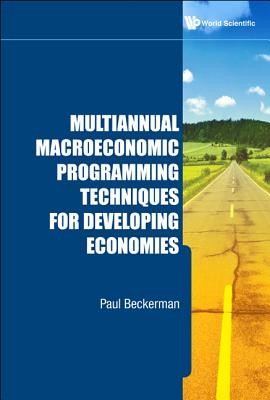
- We will send in 10–14 business days.
- Author: Paul Beckerman
- Publisher: World Scientific Publishing Company
- ISBN-10: 9814289027
- ISBN-13: 9789814289023
- Format: 15.5 x 22.9 x 2.8 cm, kieti viršeliai
- Language: English
- SAVE -10% with code: EXTRA
Multiannual Macroeconomic Programming Techniques for Developing Economies (e-book) (used book) | bookbook.eu
Reviews
Description
This book describes practical techniques to formulate multiannual macroeconomic projections for developing economies. The approach is broadly similar to that of well-known financial-programming "models", but some of the material, including solution procedures for the external and fiscal projections and the external-debt projection methodology, is innovative. The basic aim of macroeconomic programming exercises is to determine whether a quantitatively specified macroeconomic and government-expenditure policy program would be "financially feasible" -- that is, consistent over time with external and internal financing likely to be available. Exercises of the kind described here formulate national-, external-, fiscal-, and monetary-accounts projections, based on (i) assumed behavioral parameters; (ii) assumed "exogenous" world conditions and internal variables; (iii) programmed macroeconomic objectives such as real growth, inflation, and exchange-rate evolution; (iv) programmed real government expenditure; (v) an external-debt program; and (vi) data for the "base" year preceding the projection period. The projections include estimates of the external and internal financing the public sector and economy as a whole would require, which may be evaluated for feasibility. Among other applications, macroeconomic programming exercises may be used to help gauge the financial feasibility of development and poverty-reduction objectives (like the UN Millennium Development Goals), or to address external-debt "sustainability".
EXTRA 10 % discount with code: EXTRA
The promotion ends in 21d.20:59:04
The discount code is valid when purchasing from 10 €. Discounts do not stack.
- Author: Paul Beckerman
- Publisher: World Scientific Publishing Company
- ISBN-10: 9814289027
- ISBN-13: 9789814289023
- Format: 15.5 x 22.9 x 2.8 cm, kieti viršeliai
- Language: English English
This book describes practical techniques to formulate multiannual macroeconomic projections for developing economies. The approach is broadly similar to that of well-known financial-programming "models", but some of the material, including solution procedures for the external and fiscal projections and the external-debt projection methodology, is innovative. The basic aim of macroeconomic programming exercises is to determine whether a quantitatively specified macroeconomic and government-expenditure policy program would be "financially feasible" -- that is, consistent over time with external and internal financing likely to be available. Exercises of the kind described here formulate national-, external-, fiscal-, and monetary-accounts projections, based on (i) assumed behavioral parameters; (ii) assumed "exogenous" world conditions and internal variables; (iii) programmed macroeconomic objectives such as real growth, inflation, and exchange-rate evolution; (iv) programmed real government expenditure; (v) an external-debt program; and (vi) data for the "base" year preceding the projection period. The projections include estimates of the external and internal financing the public sector and economy as a whole would require, which may be evaluated for feasibility. Among other applications, macroeconomic programming exercises may be used to help gauge the financial feasibility of development and poverty-reduction objectives (like the UN Millennium Development Goals), or to address external-debt "sustainability".


Reviews